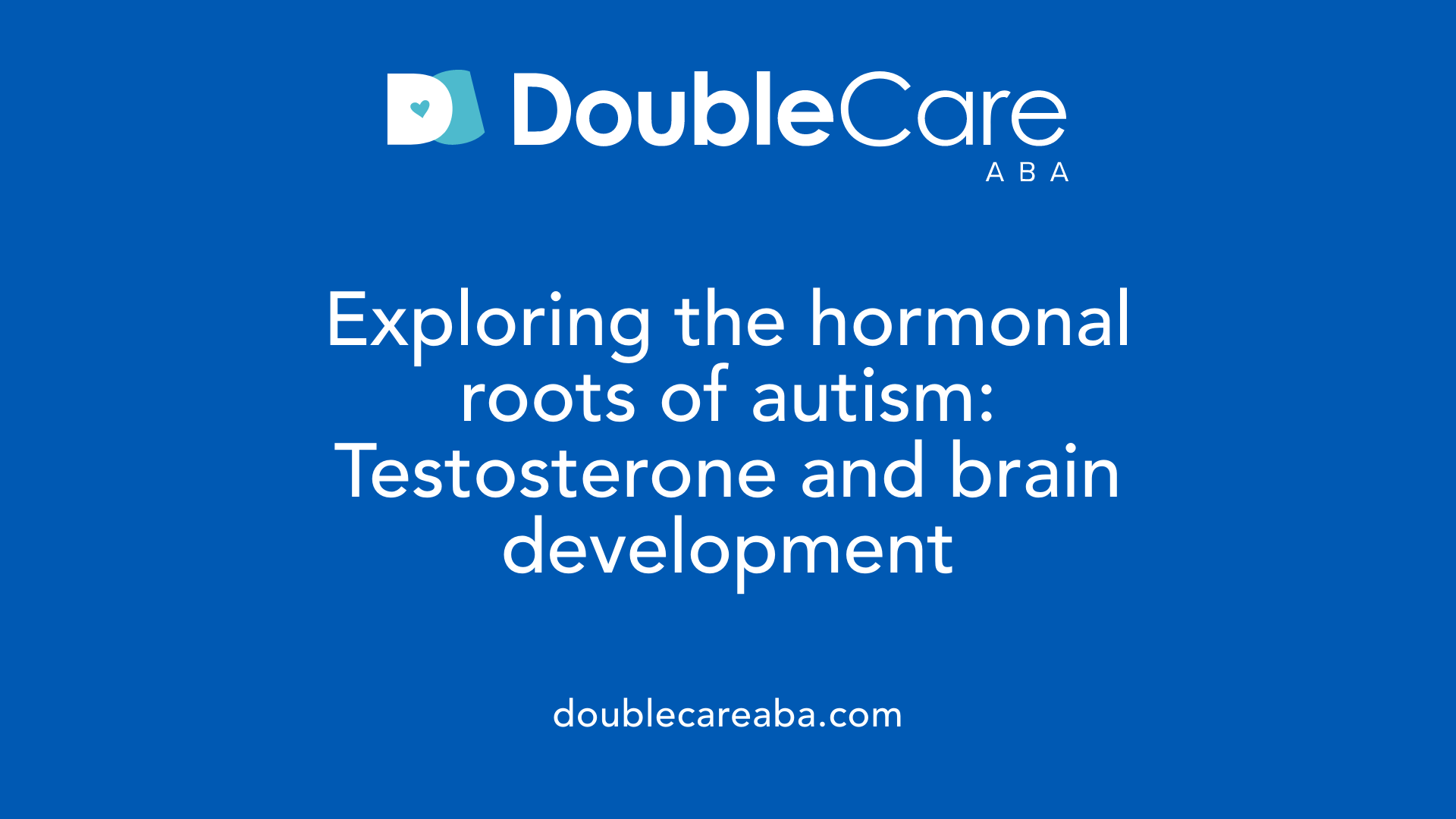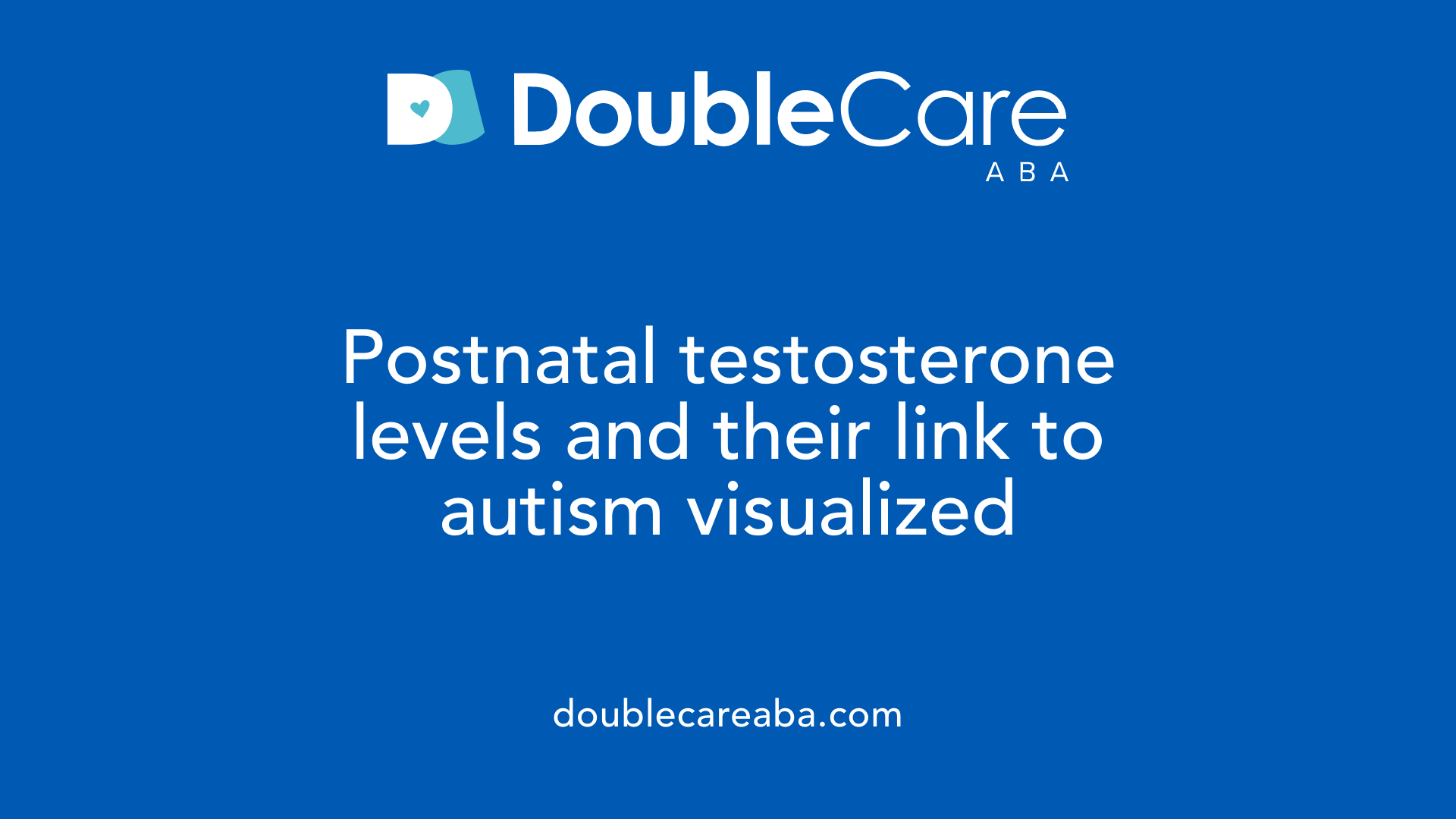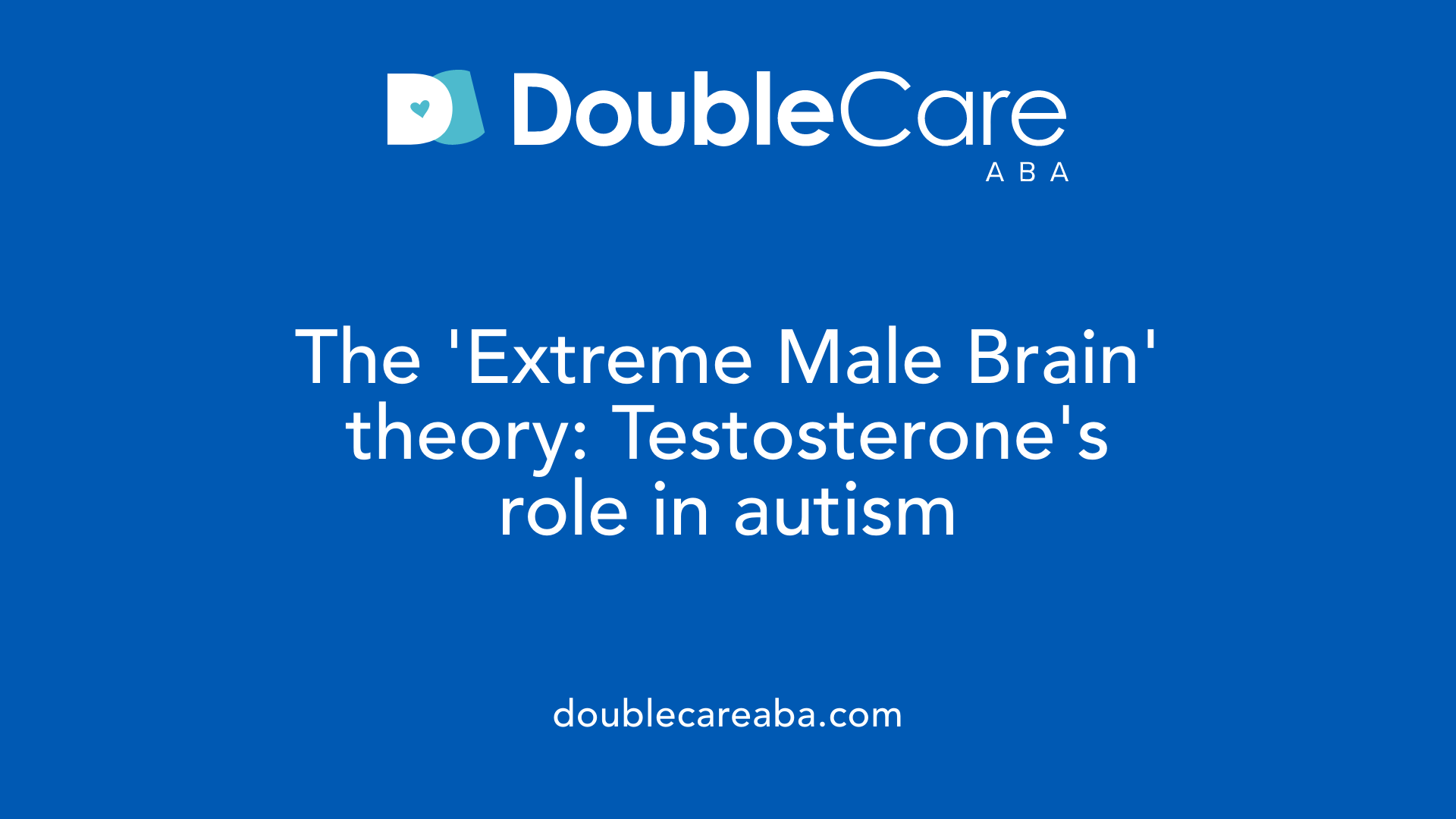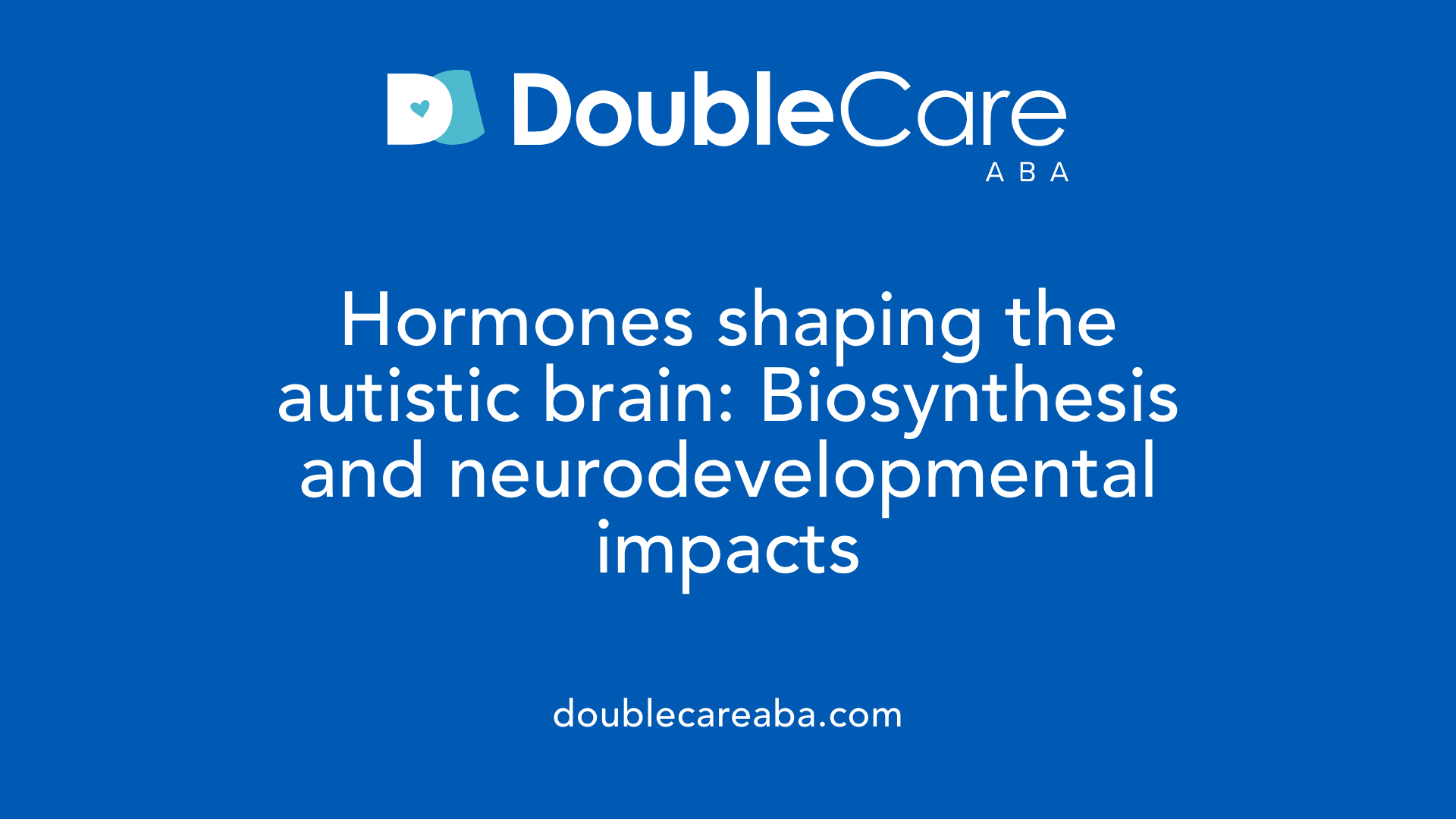Autism and Testosterone
Unlocking Biological Insights into Autism Spectrum Disorder

Exploring the Hormonal Foundation of Autism and the Role of Testosterone
Recent research has increasingly highlighted the complex interplay of hormones like testosterone in the development and manifestation of autism spectrum disorder (ASD). From prenatal exposure to hormonal influences on brain structure to the behavioral traits associated with autism, understanding these biological factors offers a promising avenue for deeper insights into the disorder. This article delves into the scientific relationship between testosterone and autism, examining evidence from genetic, neurodevelopmental, and behavioral studies.
Hormonal Foundations and Brain Structure in Autism

Is there a link between autism and testosterone?
Research indicates a clear association between testosterone levels and autistic traits. Elevated prenatal testosterone exposure has been linked to the development of autism spectrum disorder (ASD). Studies measuring fetal testosterone in amniotic fluid found higher levels correlated with traits such as poor social skills, limited imagination, and a tendency towards systemizing behaviors. Additionally, postnatal testosterone levels tend to be higher in children and adolescents with ASD, reinforcing the potential influence of androgens on neurodevelopment.
What hormones are linked to autism?
Multiple hormones are involved in the complex biology of autism. Notably, prenatal exposure to androgens like testosterone is heavily studied, with evidence suggesting that high levels in the womb may influence brain development, leading to autistic features.
Oxytocin, a hormone that affects social bonding and emotional regulation, also plays a significant role. Dysregulation of oxytocin levels might contribute to social impairments seen in autism.
Furthermore, serum levels of androstenedione—another androgen—are higher in children with severe autistic traits. These hormonal variations influence brain structures and functions, potentially underpinning some behavioral characteristics associated with autism.
How are brain structures and sex differences connected?
Sex differences in the human brain, partly driven by hormones like testosterone during prenatal and postnatal development, result in structural dimorphism. Higher prenatal testosterone exposure has been associated with certain brain features characteristic of autism—such as increased lateralization and connectivity patterns that align with the
Prenatal Testosterone and Autism Risk

Is there a link between autism and testosterone?
Research indicates a notable connection between testosterone levels and autistic traits. Studies have consistently shown that individuals with autism spectrum disorder (ASD) tend to have higher levels of testosterone, both prenatally and postnatally. Elevated fetal testosterone levels, in particular, have been associated with traits characteristic of autism, such as poorer social skills, reduced eye contact, and challenges with communication.
What hormones are linked to autism?
In addition to testosterone, other androgens like androstenedione and hormones like oxytocin are linked to autism. Prenatal exposure to high levels of androgens, mainly testosterone, is hypothesized to influence brain development by promoting systems that favor systemizing over empathizing. Elevated androgen levels may contribute to the development of features aligned with the 'extreme male brain' theory of autism. Additionally, oxytocin, a hormone involved in emotional regulation and social bonding, shows altered levels in children with autistic traits, further emphasizing hormonal influence on social behavior.
Fetal hormone measurements and autistic traits
Measuring hormone levels in utero has provided insights into the prenatal origins of autistic traits. For example, a study measuring fetal testosterone in amniotic fluid from pregnant women found that higher fetal testosterone correlated with increased autistic traits in children. These traits included reduced social interactions and communication difficulties, although such correlations do not necessarily imply causation.
In summary, evidence from multiple studies supports the idea that elevated prenatal testosterone influences brain structures and functions related to social cognition. These hormonal impacts may explain some of the neurodevelopmental differences observed in autism, reinforcing the importance of fetal hormone exposure in autism research.
Postnatal Testosterone and Autism Traits

Is there a link between autism and testosterone?
Research has demonstrated a notable association between testosterone levels and autistic traits. Studies consistently show that individuals with autism spectrum disorder (ASD) tend to have higher levels of testosterone compared to typically developing peers. This elevation is observed both prenatally and postnatally, suggesting that testosterone may influence brain development pathways linked to autism.
What hormones are linked to autism?
A variety of hormones have been examined in relation to autism, with particular attention on androgens such as testosterone. Elevated prenatal androgen exposure is hypothesized to contribute to autistic traits, such as difficulties in social interaction and communication.
Postnatal testosterone levels in children with ASD
In children with ASD, postnatal testosterone levels tend to be higher than those in typically developing children. For instance, studies measuring salivary testosterone have shown that youth with ASD exhibit significantly increased levels compared to their peers, and these levels tend to rise with age.
Age-related changes in hormone levels
Postnatal testosterone levels naturally increase as children approach puberty. In children with ASD, this increase appears more pronounced. Research indicates that testosterone levels in boys with ASD continue to rise past early childhood, often surpassing levels seen in typically developing boys at the same age.
Correlation with autistic behaviors
Higher testosterone levels have been associated with specific autistic behaviors, such as reduced eye contact and social engagement. Although some researchers hypothesize that elevated testosterone might amplify systemizing tendencies, the precise impact on social and communication skills remains complex. Interestingly, despite the hormonal disparities, some studies have found no direct relationship between testosterone levels and social responsiveness scores, indicating that the connection involves multiple biological factors.
| Aspect | Observation | Additional Details |
|---|---|---|
| Postnatal testosterone in ASD | Elevated compared to controls | Consistent across multiple studies |
| Age-related changes | Levels increase with age, especially during puberty | Higher in older children and adolescents with ASD |
| Behavioral correlations | Mixed findings; some link with social traits | More research needed to clarify associations |
Understanding the hormonal landscape in ASD can provide insights into the biological factors influencing the condition. The ongoing research emphasizes that postnatal testosterone levels are an important piece of the puzzle, especially when considering age-dependent changes and behavioral outcomes.
The 'Extreme Male Brain' Hypothesis and Autism

What is the prenatal exposure theory?
The prenatal exposure theory suggests that higher levels of testosterone in the womb may influence brain development in ways associated with autistic traits. Studies measuring fetal testosterone levels found that elevated concentrations correlate with increased autistic-like features in children, such as difficulties with social interaction and communication. This theory supports the idea that hormonal environment during pregnancy can shape neurodevelopment.
How are hypermasculine traits linked to autism?
Autism spectrum disorder (ASD) is often linked to 'hypermasculine' traits, which are thought to arise from increased prenatal and postnatal testosterone. The concept known as the 'extreme male brain' hypothesis proposes that autism results from exposure to excess testosterone during fetal development, leading to brain patterns that favor systemizing over empathizing. This may manifest as intense focus on details and challenges with social cues.
What about genetic variability in androgen receptors?
Genetic differences affect how individuals respond to androgens like testosterone. Variations in androgen receptor genes can influence brain development and cognitive functions, potentially modulating the impact of hormones on autism traits. Research suggests that some genetic profiles linked to higher androgen sensitivity are more prevalent in those with ASD.
Is there a link between autism and testosterone?
Research has shown that there is an association between testosterone levels and autistic traits. Higher levels of testosterone have been found in individuals with ASD compared to those without the condition.
What hormones are linked to autism?
Several hormones have been studied in relation to autism, with prenatal exposure to androgens, such as testosterone, being notably associated. Elevated levels of prenatal androgens are hypothesized to influence brain development, potentially leading to increased systemicization and reduced empathic behaviors often observed in autism.
| Hormone/Factor | Effect/Observation | Additional Details |
|---|---|---|
| Prenatal Testosterone | Higher levels linked to autistic traits | Measured in amniotic fluid, associated with poor social skills |
| Serum Testosterone (postnatal) | Elevated in children with ASD | Studies show higher testosterone in youth with ASD |
| DHEA | Elevated in individuals with ASD, especially males | Related to steroid metabolism |
| Androstenedione | Higher in children with severe autistic traits | Influences clinical severity |
This research underscores the complex relationship between hormonal exposure and autism. While elevated testosterone correlates with autistic features, it remains part of a broader biological and environmental puzzle in understanding autism's origins.
Hormonal Biosynthesis and Neurodevelopmental Effects

Is there a link between autism and testosterone?
Research indicates a notable association between testosterone levels and autistic traits. Elevated levels of testosterone, particularly during prenatal development, are often observed in individuals on the autism spectrum. Studies measuring fetal testosterone in amniotic fluid and serum testosterone in children have found that higher concentrations correlate with traits such as reduced social reciprocity, lower empathy, and heightened systemizing behaviors.
In particular, elevated testosterone levels postnatally are seen in some children with ASD, and gender differences in testosterone levels develop during puberty, with males generally exhibiting higher levels that continue to increase. These hormonal patterns suggest that testosterone may influence core features of autism, including social communication difficulties.
What hormones are linked to autism?
Several hormones have been linked to autism, especially androgens like testosterone. Elevated prenatal exposure to androgens is hypothesized to modulate brain development, leading to brain structural differences and functional connectivity patterns associated with autism.
High fetal testosterone correlates with traits such as limited eye contact, poorer language development, and social difficulties. Additionally, research shows higher serum testosterone and other androgens like androstenedione and DHEA in individuals with Autism Spectrum Disorder (ASD). These hormonal imbalances are thought to contribute to the “extreme male brain” hypothesis, which proposes that excess prenatal androgens cause a hyper-masculinized brain.
| Hormone | Typical Role in Development | Connection to Autism | Evidence Level |
|---|---|---|---|
| Testosterone | Supports sex differentiation, brain development | Elevated levels linked to autistic traits, deficits in social skills | Multiple studies, meta-analyses |
| DHEA | Steroid precursor, involved in stress response | Higher levels observed in ASD, especially in males | Meta-analysis, clinical studies |
| Oxytocin | Modulates social bond, emotion, coping mechanisms | Lower serum oxytocin correlates with social impairments in ASD | Neurochemical research |
Role of sex steroids in brain structure
The influence of sex steroids, including testosterone and estradiol, begins prenatally and extends through adolescence, shaping brain connectivity, lateralization, and size differences across sexes. Higher prenatal testosterone has been linked to structural brain differences seen in autism, such as alterations in areas involved in social cognition.
Testosterone metabolism into dihydrotestosterone and estradiol during developmental stages influences neural pathways, affecting social behavior and cognitive functions like spatial reasoning and language skills. The complex interactions between these hormones and genetic factors govern the neuroanatomical and functional features characteristic of the autism spectrum.
Understanding how these hormonal influences operate can provide insight into potential biological markers or targets for intervention, emphasizing the importance of neurohormonal pathways in neurodevelopmental disorders.
Unraveling the Hormonal Layers of Autism
The emerging body of research underscores a significant association between testosterone levels and autism spectrum disorder, highlighting both prenatal and postnatal influences. Elevated fetal testosterone exposure might predispose individuals to traits characteristic of autism, such as social difficulties and systemizing behaviors. Meanwhile, hormonal regulation, including oxytocin and androgen receptor activity, continues to be an important focus for understanding autism’s neurobiological roots. While these findings deepen our comprehension of ASD’s biological underpinnings, they also open pathways for potential hormonal and neurodevelopmental interventions, paving the way for future research that may better inform diagnosis and tailored therapies.
References
- The association between autistic traits and serum testosterone ...
- Testosterone and the Brain: From Cognition to Autism - PMC
- Androgen levels in autism spectrum disorders: a systematic review ...
- Salivary testosterone in male and female youth with and without ...
- Study challenges idea that autism is caused by an overly masculine ...
- Research links testosterone levels to autistic traits
- The association between autistic traits and serum testosterone ...
- Elevated rates of testosterone-related disorders in women with ...
















